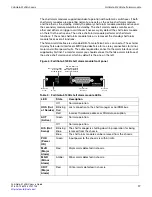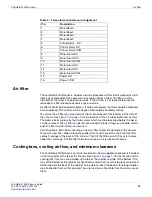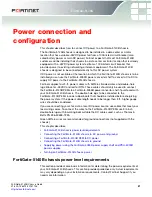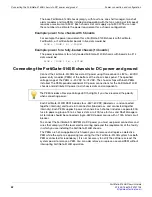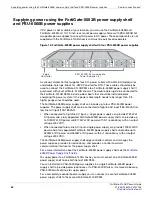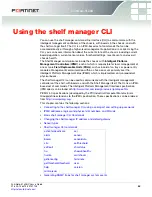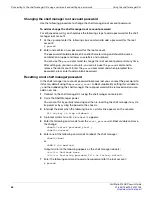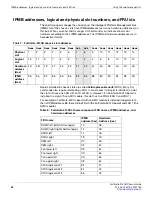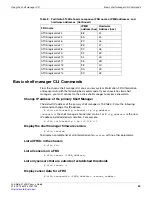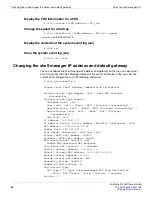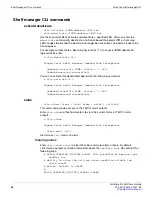
FortiGate-5140B Chassis Guide
01-500-156415-20151104
31
FortiGate-5140B
FortiGate-5140B hardware
procedures
This chapter assumes the chassis has been mounted and connected to a power source
as detailed in
“Power connection and configuration” on page 21
.
This chapter discusses:
•
Mounting the FortiGate-5140B chassis
•
Inserting 5000 series boards and RTM modules into a FortiGate-5140B chassis
•
Using FortiController-5103B boards for session-aware load balancing
•
Using FortiSwitch-5003B boards for backplane communication
•
Using FortiSwitch-5203B boards for content clustering
Mounting the FortiGate-5140B chassis
The FortiGate-5140B chassis must be mounted in a standard 19-inch rack. The chassis
requires 13U of vertical space in the rack.
If you install the FortiGate-5140B chassis in a closed or multi-unit rack assembly, the
operating ambient temperature of the rack environment may be greater than room
ambient temperature. Make sure the operating ambient temperature does not exceed the
manufacturer's maximum rated ambient temperature.
Air flow
For rack installation, make sure that the amount of air flow required for safe operation of
the FortiGate-5140B chassis is not compromised. Make sure that the chassis ventilation
openings at the top rear and the bottom front are not blocked by cables or other
components. The recommended minimum clearance at the front of the chassis is
100 mm and the recommended clearance from the rear of the chassis is 60 mm. This
results in a total footprint of 600 mm from front to back. See
flow, and minimum clearance” on page 19
for more details.
Mount the FortiGate chassis before installing the FortiGate-5000 series modules.
The FortiGate-5140B chassis should not be operated as a free-standing appliance.
Install the FortiGate-5140B chassis at the lower positions in the rack to avoid making the
rack top-heavy and potentially falling over.

